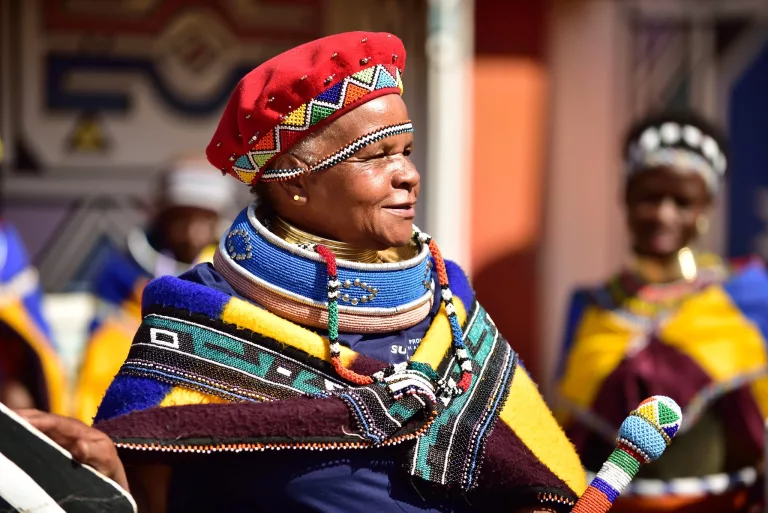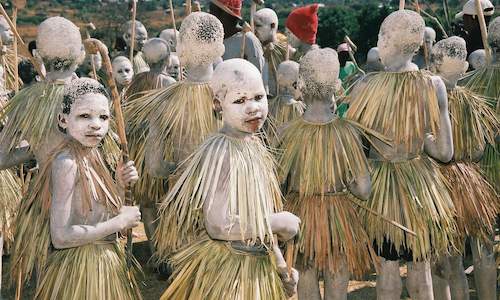The 25-Second Trick For South African Culture Today
The 25-Second Trick For South African Culture Today
Blog Article
The Buzz on South African Culture Today
Table of ContentsThe smart Trick of South African Culture Today That Nobody is Talking AboutAn Unbiased View of South African Culture Today4 Simple Techniques For South African Culture TodayGet This Report about South African Culture TodayThe smart Trick of South African Culture Today That Nobody is DiscussingAn Unbiased View of South African Culture Today
This follows with singing and drum pounding. The groom and bride after that fulfill with the elders and speak about the significance of their union. An issue of importance in Zambian towns is the passing away of enjoyed ones. All members of the village put cash, effort and time with each other for the burial of the deceased.During the grieving duration; guys remain outside your home and the females remain inside your house of the deceased. After speaking about the deceased, the town walks to the location of burial to state their last goodbyes. Music and dancing is a really important aspect of the Zambian culture. The numerous tribal units have their own dancing types; however, makishi is usual amongst all tribes.
The Single Strategy To Use For South African Culture Today
When it pertains to music, drums are utilized the most, with a variety of drumming events. In Zambia, bulk of individuals are Christian; Protestant and Roman Catholic. There are tiny groups of Muslims and Hindus, with the rest complying with local indigenous tribal beliefs.

South African heritage and society is greatly varied, and contains various groups of people who each have their own practices and beliefs. Having such a variety of individuals and cultures is what makes South Africa so one-of-a-kind. In the real feeling of the expression, we are a rainbow nation.
South Africa has approximately 3 hundred thousand Portuguese people living in it. Making it the 7th on the listing of countries with one of the most Portuguese people in it beyond Portugal. Portuguese is not only a culture, but it is additionally a language and a citizenship. Portuguese individuals originate from the nation of Portugal in Europe, however, due to Portugal (like many other nations in Europe) exploring the globe and conquering other countries throughout the 15th 20th centuries, South Africa has what we call Portuguese South African's living in it.
The 10-Minute Rule for South African Culture Today
Among the noticeable features of the topography is a plateau that covers almost two thirds of the facility of the nation. The plateau facility rises towards the southeast, where it climaxes in the Drakensberg array, part of a cliff that separates the plateau from the coastal areas. The Drakensburg includes Champagne Castle, the highest top in the nation.
The area north of the Witwatersrand, called the bushveld, slopes downward from east to west toward the Limpopo River, which forms the global border. The western section of the plateau, the middleveld, likewise descends in the direction of the west and differs in altitude in between the highveld and bushveld. Between the Drakensburg and the eastern and southerly shoreline, the land comes down to the sea.
Nearer the coast there is a low-lying level called the eastern lowveld. Southwest of the plateau the nation ends up being gradually much more arid, paving the way to the stony desert of the Great Karroo, verged on the eastern by the reduced, much better watered plateau of the Little Karroo. Separating the dry southern inside from the sandy littoral of the southerly coastline and West Cape is one more range, the Langeberg.
The 9-Minute Rule for South African Culture Today
The nation's racially, ethnically, and politically separated background index has actually produced nationwide and subnational icons that still work as symbols of the nation, and others symbols that are accepted only by particular groups. The monuments to white settler conquest and political prominence, such as the Afrikaner Voortrekker ("leader") Monolith in Pretoria and the Rhodes Monument recognizing the British colonial empire building contractor and Cape head of state Cecil Rhodes, stay sectarian signs.
The initial contemporary occupants were the San ("bushman") hunter-gatherers and the Khoi ("Hottentot") individuals, that rounded up livestock (South African culture today). The San might have been present for hundreds of years and left proof of their visibility in countless ancient cavern paintings ("rock art"). Bantu-speaking clans that were the forefathers of the Nguni (today's amaZulu, amaXhosa, amaSwazi, and vaTsonga peoples) and Tswana-Sotho language groups (today's Batswana and Southern and Northern Basotho) migrated below east Africa as very early as the fifteenth century

Both former republics of the Orange Free State and Transvaal (South African Republic) were developed by Afrikaner settlers that defeated and dispossessed the Basotho and Batswana. Lesotho would have been forcibly integrated right into the Orange Free State without the extension of British defense in 1869. The ultimate unification of the nation resulted from the South African War (18991902) between the British and the two Afrikaner republics, which lowered the nation to mess up at the beginning of the twentieth century.
Afrikaners historically considered themselves the just real South Africans and, while providing full citizenship to all residents of European descent, denied that condition to people of shade up until the democratic transition of 1994. British South Africans preserve a feeling of cultural and social link to Great Britain without compromising their identity as South Africans.
Some Of South African Culture Today
The variety and fragmentation within ethnic collections and the balance of tensions in between those groups during the twentieth century prevented interethnic civil conflict. While intergroup tensions over resources, entitlements, and political supremacy stay, those disputes are as likely to match Zulu versus Zulu as Zulu versus Xhosa or African versus Afrikaner.
From colonial India, British sellers and administrators brought the bent steel ornamental roofing systems and slender shoelace work pillars that still typify the verandas of homes in the areas and cities throughout the nation. Holy places contribute an important building aspect also in the smallest communities. In addition to the soaring steeples and traditional stonework of Afrikaans Dutch Reformed churches, Anglican churches, synagogues, mosques, and Hindu shrines give range to the religious building scene.

Slaughtering and the developing of standard cereal beer are necessary in safeguarding the engagement and goodwill of the forefathers who are thought about the guardians of good luck, success, and health. Indian communities keep their indigenous cooking practices and apply them on Islamic and Hindu routine and ceremonial occasions. Afrikaners and Coloured people gather at weekends and unique events at multifamily bbqs called braais, where neighborhood bonds are enhanced.
Since this was the primary economic business of both black Africans and white homesteaders, problem between those teams fixated the property of grazing land and livestock. In original site 1867, the largest ruby deposits worldwide were found at Kimberley in the west central area. The wide range from those areas helped finance the exploitation of the best gold coral reef worldwide, which was found on the Witwatersrand in 1886.
The smart Trick of South African Culture Today That Nobody is Discussing
This caused misunderstandings and calculated misrepresentation in the ventures of white settlers and federal government authorities with African principals throughout the early american duration (South African culture today). In the facility of African books, some facets of common and mainly "tribal count on" land period were protected, and also in white backwoods, kinds of public period were still exercised in locations with African communities
After the autonomous improvement of 1994, programs for land restitution, redistribution, and reform were set up, but progression has been slow. The white minority still manages visit this web-site eighty percent of the land. In the wake of farming land invasions in Zimbabwe, the Division of Land Affairs has actually vowed to speed up land redistribution.
Report this page